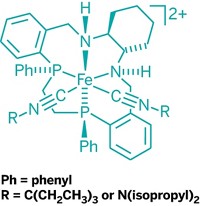Advertisement
Grab your lab coat. Let's get started
Welcome!
Welcome!
Create an account below to get 6 C&EN articles per month, receive newsletters and more - all free.
It seems this is your first time logging in online. Please enter the following information to continue.
As an ACS member you automatically get access to this site. All we need is few more details to create your reading experience.
Not you? Sign in with a different account.
Not you? Sign in with a different account.
ERROR 1
ERROR 1
ERROR 2
ERROR 2
ERROR 2
ERROR 2
ERROR 2
Password and Confirm password must match.
If you have an ACS member number, please enter it here so we can link this account to your membership. (optional)
ERROR 2
ACS values your privacy. By submitting your information, you are gaining access to C&EN and subscribing to our weekly newsletter. We use the information you provide to make your reading experience better, and we will never sell your data to third party members.
Synthesis
New route to unbranched alkenyl and alkyl arenes
Catalytic reaction makes compounds used industrially to produce soaps, detergents, and additives
by Stu Borman
April 24, 2017
| A version of this story appeared in
Volume 95, Issue 17

A new catalytic reaction combines arenes with α-olefins to selectively make unbranched alkenyl and alkyl arenes, complementing the industrial pathways that lead to corresponding branched alkyl arenes. The products could add to the diversity of compounds available for making soaps, detergents, fuel and lubricant additives, polymer precursors, and flavors and fragrances. The reaction was developed by T. Brent Gunnoe of the University of Virginia and coworkers (J. Am. Chem. Soc. 2017, DOI: 10.1021/jacs.7b01165). The researchers use a rhodium salt catalyst without an added ligand and a Cu(II) oxidant to functionalize benzene, toluene, and other arenes with α-olefins such as propylene and 1-hexene to form unbranched alkenyl arenes. The products can be hydrogenated to make unbranched alkyl arenes, which are not accessible by the acid-catalyzed routes traditionally used industrially to make alkyl arenes. One challenge for the reaction is the high cost of rhodium, but Gunnoe believes recovering and recycling the metal could keep the expense reasonable.





Join the conversation
Contact the reporter
Submit a Letter to the Editor for publication
Engage with us on Twitter